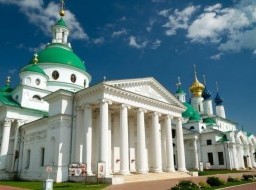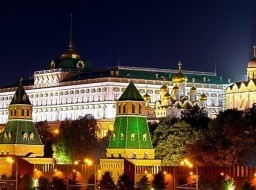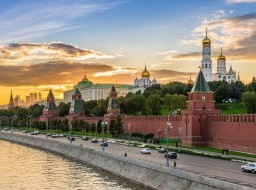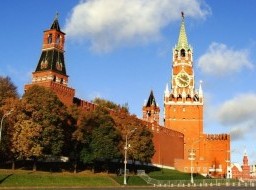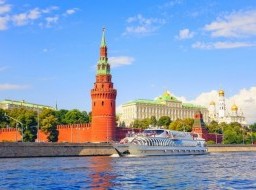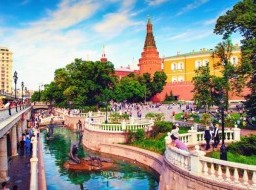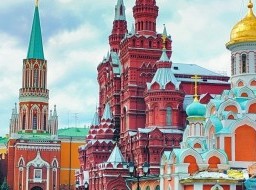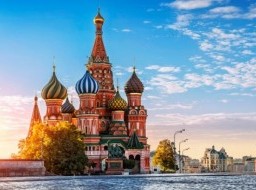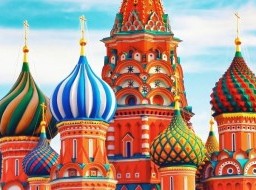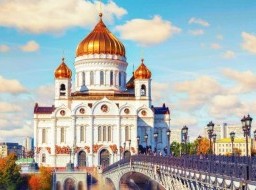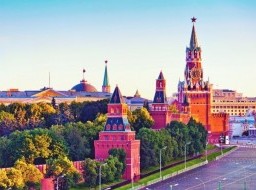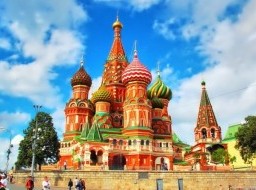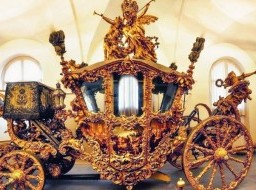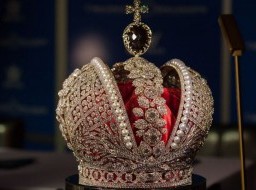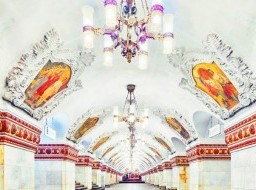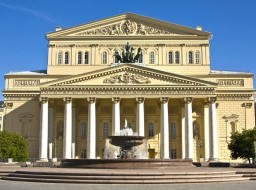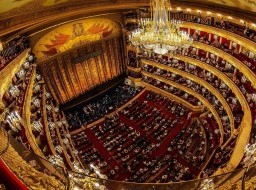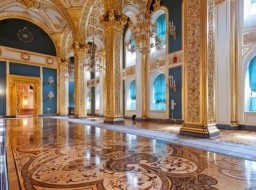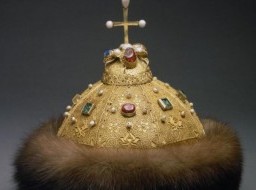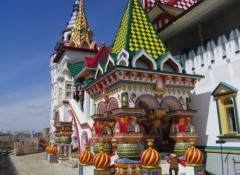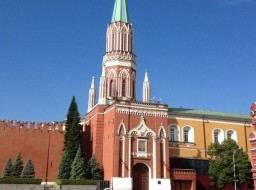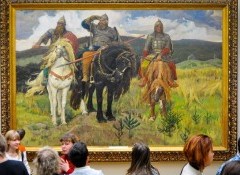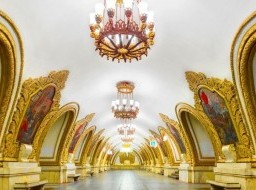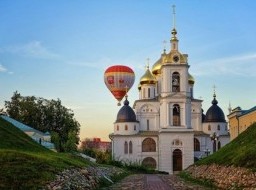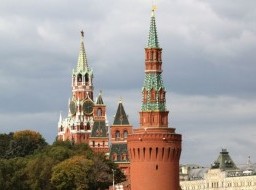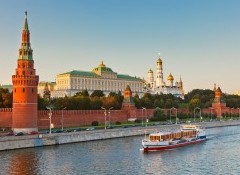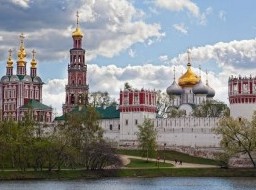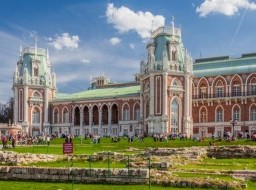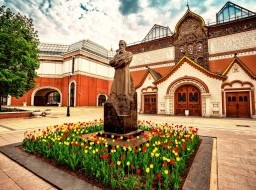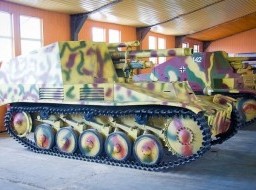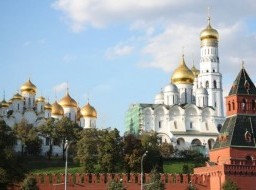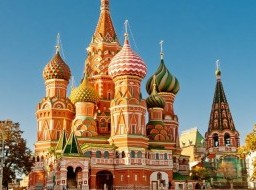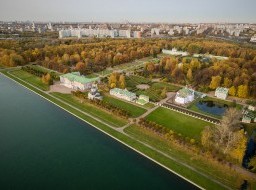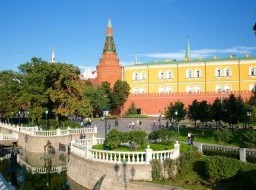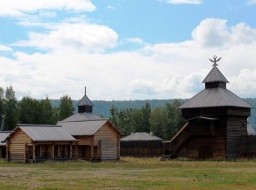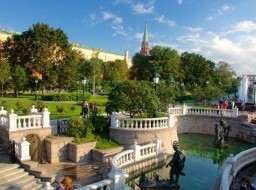The Diamond Fund (The Kremlin)
Diamond fund is the unique collection of the best jewelers’ works of Russia and the world. At the heart of the Diamond Fund display are historical ceremonial jewels and the Regalia of the Romanovs’ tsar family, crowns, tiaras, a scepter and an orb, jewel sets, orders created by the most eminent jewellers of the 17-19th centuries. The museum also keeps some of the most extraordinary diamonds in the world, unique nuggets of gold and platinum as well as modern jewel masterpieces of the present days. The “richest” museum of Russia, it is the truest highlight of a visit to the Kremlin. You have a really unique chance to visit the great, splendid treasury and admire the stunning collection of tsars’ amazing treasures. The Moscow Kremlin is the site of several world-famous museums attracting numerous visitors. The fabulous Diamond Fund exhibition is one of them. The idea of collecting jewels that belonged specifically to the Russian state - rather than to the ruling family - originated with Peter the Great, who had seen similar collections on his travels in Europe. He issued a proclamation that ordered each of his successors to leave a number of their jewels to the state, and declared that the state's fund was inviolate: the jewels could never be sold, altered or given away. The fund was housed in the Winter Palace in St. Petersburg, in a secure room called the Diamond Chamber, and grew rapidly, with a particularly large contribution from Peter's granddaughter, Empress Elizabeth, who was notorious for her love of expensive costumes and jewelry. The collection was transported from St. Petersburg to Moscow in 1914, to be kept safe in vaults beneath the Kremlin. There it languished half forgotten during the years of the Civil War. The most important pieces of state regalia were kept in the Kremlin, and eventually went on display in 1967, although only for high-ranking officials and visiting dignitaries. It wasn't until the fall of communism that the fund was opened to the public. Now, although there are still strict rules governing visits, this extraordinary collection is open to everyone, and ranks among the world's most spectacular displays of jewels. Highlights of the collection include Catherine the Great's stunningly lavish coronation crown (also called the Great Imperial Crown), the world's largest sapphire, the famous Orlov Diamond, and, of course, numerous Faberge eggs. The masterpiece of jewelry is The Great Imperial Crown. The gold-and-silver crown made by a court jeweler Jeremiah Posier is decorated with almost five thousand diamonds – large and small – and 75 perfectly round, even-shaped large pearls. Posier achieved a harmonious combination of magnificent diamonds and white-pink pearls enhancing the stateliness and majesty of the crown's design. A huge ruby-red spinel crowned with a diamond cross was placed on its top. The Russian Imperial Crown, weighing almost 400 carats – the most expensive in the world — is one of the seven historic gems of the Diamond Fund exhibition. The collection of amazing regalia in the Diamond Fund consists of the Great and Small crowns, maces, scepters, the Great Chain with the cross and star of the Order of St Andrew and clasps to fasten the coronation mantle. The historical section of the exhibition contains "Seven Wonders". These are seven world famous precious stones. One of them is the Orlov diamond. This bluish-greenish crystal of the first-class clarity is cut in the shape of a rose with a great number of small facets arranged in layers. The Orlov diamond is believed to have been found in India where, according to a legend, it had served as the eye of an idol in a Brahman temple until the beginning of the 18th century, when it was stolen. In 1774, it was bought by Count Grigory Orlov who presented it to Empress Catherine the Great. Since that time the Orlov diamond has adorned the gold scepter of Russian Emperors. Another historic gem of the Diamond Fund exhibition is the Shah, another Indian diamond found in the 16th century. Its perfect shape was created by nature, and only some of its facets were slightly polished. This is a transparent gem with a slight yellow tint. Engraved on three of its facets are the names of the three rulers who, in turn, possessed it. In the 17th century, the diamond adorned the throne of the TiaraMughal Empire as a talisman. When Shah Nadir conquered Delhi in 1739, he took the stone away with him to Persia. Ninety years later, the diamond was presented to Russian Emperor Nicholas I by the Shah of Persia "in atonement" for the assassination of Russian Ambassador in Tehran, a noted diplomat and poet Alexander Griboyedov. Today the Diamond Fund exposition is housed on the ground floor of the Kremlin's Armory Chamber. On display in the first of its two halls are Russian diamonds, a rare collection of gold and platinum nuggets, and also Russian-made jewelry. The largest diamonds found in this country include some remarkable specimens named after notable events or personalities, such as the Star of Yakutia, the Great Beginning, and the Yuri Gagarin diamonds. The Diamond fund has the world largest collection of golden nuggets. The Big Triangle weighs 36 kilograms. It is the heaviest one in the world. Many of them have unusual shapes hence their names are: Hare's Ears, Camel, Mephistopheles. The Diamond fund, the unique depository, is among the three richest collections of that kind, the Jewel House in the Tower of London and the National Treasury in Iran. |
|
